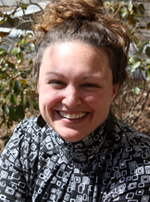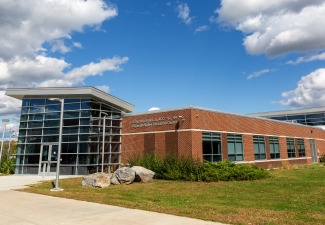Altona Wildfire, Undergrad Research Topic of Faculty Talk
Two faculty members from the SUNY Plattsburgh Center for Earth and Environmental Science will discuss what happens to an ecosystem following a wildfire at “Afterburn!,” 7 p.m. Thursday, Sept. 2 at the Joseph C. Burke Education and Research Center, Miner Institute, Chazy.
 Between July 12 and 18, 2018, fire believed to have been started from a nearby campfire
swept through 2.25 square kilometers of the 32-square kilometer area known as Altona
Flat Rock located about 20 miles north of Plattsburgh, devastating the landscape,
which includes a historic jack pine bush and scores of blueberry and huckleberry brush,
according to Dr. Danielle Garneau, associate professor of environmental science.
Between July 12 and 18, 2018, fire believed to have been started from a nearby campfire
swept through 2.25 square kilometers of the 32-square kilometer area known as Altona
Flat Rock located about 20 miles north of Plattsburgh, devastating the landscape,
which includes a historic jack pine bush and scores of blueberry and huckleberry brush,
according to Dr. Danielle Garneau, associate professor of environmental science.
Both Garneau and Dr. Mark Lesser, assistant professor, environmental science, will discuss the wildfire and its aftermath at the Sept. 2 talk.
While the fire was a complete loss of the berries and a swath of standing dead jack pine trees, the fire, and a smaller one that sparked last summer, provides a unique opportunity for research.
“We are observing ecological succession in real time following a major disturbance,” Garneau said. “Faculty from various expertise have contributed valuable information as to how the ecosystem is responding to loss of over-and-understory vegetation and a massive pulse of nutrients.”
Jack Pine Cones
Jack pine have developed cones that are covered with a thick outer layer that has
to be melted in order for the cones to open and release seeds. When a fire such as
the 2018 event occurs, the cones open, seeds are distributed and germination can occur
in the ash.
Garneau said she, her colleagues and student researchers are monitoring the vegetation and area left behind after the fire.
“We’re specifically looking at overstory — the uppermost layer of foliage — composition, fire severity, understory and soil composition,” she said. Lesser brings his students from forest ecology and management and independent study researchers in the fall to collect data.
“We all go out in the summer to do the majority of understudy sampling together,” Garneau said. “I take my students from wildlife ecology and management to the Flat Rock to survey small mammal community composition and the larger animal monitoring is occurring via game cameras.”
Students’ Semester-Long Projects
Students in class have also surveyed birds, turtles and beaver since 2018 for semester-long projects, Garneau said.
The wildfire has, in fact, created a unique outdoor laboratory for environmental science
majors, graduate students and faculty alike. Dr. Timothy Mihuc, distinguished service professor in environmental science and director of the Lake
Champlain Research Institute, brings students, independent study research students
and graduate students to Flat Rock to monitor insect community changes, while Dr. Mary Alldred, assistant professor, environmental science, has students monitoring soil in the
wetlands and across the swath cut by the wildfire.
Others doing research there include Drs. Kimberly Coleman, Curt Gervich and Colin Fuss, along with Garneau and Lesser, all of whom received a nearly $150,000 United States Department of Agriculture Forest Service grant to develop fire planning for the community.
“This resulted in an equipment upgrade to the Altona Fire Department and wildland fire training support, outreach initiatives with the community and an opportunity to build in some land management working with foresters, CV-Tech students and SUNY Plattsburgh students as well,” Garneau said. “We have been fortunate to have independent study students who have wanted to continue monitoring the game cameras, and that resulted in a recent peer-reviewed publication with our students.” You can find the publication here.
A reception showcasing student research will be held prior to the “Afterburn!” talk at 6:30 p.m. at the institute, 586 Ridge Road, Chazy. For more information, contact Garneau at [email protected] or Lesser at [email protected].
News

SUNY Adirondack Students Benefit from New Dual Agreement with SUNY Plattsburgh Queensbury
